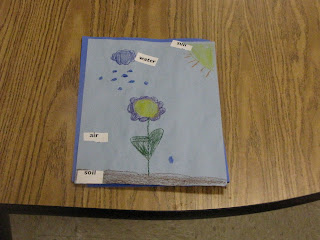Of course, the first thing that we did was read the book.
Then the students wrote about it.
I wanted artwork to go next to their writing. I must admit that I came up with this project on the fly. I borrowed a bear pattern from one of my co-workers, and got the honey bees from another co-worker.
I was originally going to have them paint on white paper, but I didn't have enough. Instead I used light brown paper. It ended up working great! The light brown paper with the darker brown paint gave a layered look that reflected the style of illustrations in the book.
I incorporated science into the lesson by teaching my students facts about bees. We learned about their body structure, work habits, and habitat.
Bee Facts I had them organize their thoughts using this format.

I worked with the students on editing their work (the above picture was taken before the work was edited). Then they copied it onto lined paper and drew an illustration.
I wanted artwork to put next to the students' facts. This was another project I came up with quickly. I had the bee pattern from another project, and used pattern blocks for the hexagons that make up the honeycombs.
I let the students decide how many hexagons they used (they needed to use at least six), and how many bees they used. They had a lot of fun with this, and I am pretty pleased with the result. When I do this in the future I will have the students label the parts of the bee.
We've been working on adding. I would like to come up with an adding math center with manipulatives to use with this unit in the future. For this year, I made an adding practice sheet with a bee graphic on the top.
Up Next: Eric Carle- The Honey Bee and the Robber Buzz Words Activity
































